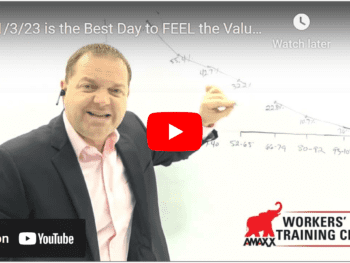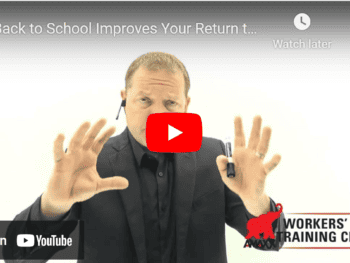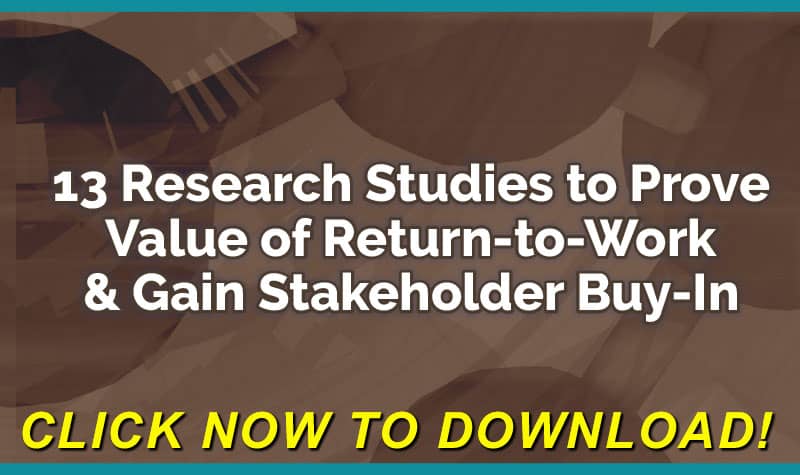
The Habits
Stephen R. Covey’s book resonated with organizations as well as individuals. The 7 habits include three related to moving from dependence to independence (or self-mastery), 3 focused on interdependence, and the 7th as striving for continuous improvement.
The Independence habits included
- Be Proactive. Rather than operating in a reactive mode waiting for things to happen, the idea is to take responsibility.
- Begin with the End in Mind. This called for clearly visualizing the ultimate goal then working toward it.
- Put First Things First. This addresses priorities.
Click Link to Access Free PDF Download
“13 Research Studies to Prove Value of Return-to-Work Program & Gain Stakeholder Buy-In”
Interdependence habits
- Think Win-win. The idea here is that there doesn’t need to be a ‘loser’ in order for there to be a ‘winner;’ instead, when one wins, everybody wins.
- Seek First To Understand, Then To Be Understood. The goal here is active listening; truly hearing what another person is saying before you speak.
- By working together with open minds, people can accomplish more and better results than they would individually.
Sharpen the Saw is the 7th habit. This means staying sharp and increasing effectiveness by renewing yourself mentally and physically.
The 7 Habits of a Highly Effective Workers’ Comp Program
Whether creating a workers’ compensation program from scratch or trying to improve an existing one, the 7 habits can easily be translated for optimal outcomes.
- Be proactive. Taking responsibility means anticipating and mitigating risks to prevent injuries from occurring. A hazard identification and assessment is a must for any workers’ compensation program; it not only can prevent a workers’ compensation claim, but it also helps create a culture of safety and shows employees you care about them. all injuries and illnesses as well as near-misses, and encouraging and listening to employees’ concerns about safety..
- Begin with the end in mind. If you were to imagine the perfect workers’ compensation program for your organization, what would it look like? Would it mean fewer accidents? Quicker claims processing? Faster reporting of incidents and near misses? Better investigations into injuries? What elements would be included? In designing or refining your workers’ compensation program you need to start by clarifying the vision of what you want. Working with others — managers, supervisors, employees, the carrier, TPA — you can brainstorm and come up with a model, then create a mission statement that includes the goals that are aligned with those of the organization’s. Achieving best outcomes is possible only when you’ve defined what ‘best outcomes’ means to your company.
- Put first things first. This is a continuation of the habit #2. In that, you have visualized and defined the ideal workers’ compensation program. This step is creating that program. You need to determine what the most important elements in the program are and focus on those first; the priorities that are both important and urgent.
- Think win-win. An effective return-to-work program is an example of a win-win situation; the worker wins by recovering and getting back to work and the organization wins by saving money and reducing lost productivity. Creating a win-win culture can be difficult, as many of us believe one person must lose for another to succeed. Instead of a competitive environment, a cooperative atmosphere can benefit all involved.
- Seek to understand, then be understood. If you’ve ever had a sales person try to push you into a product in which you have no interest, you understand the need to be heard. Active listening means just that — listening to what the other person says without creating your response as they are speaking. This is especially important when talking with an injured worker. Listen to his concerns and frustrations with an open mind — there could be a simple solution. Ask what questions he has and answer them. Spend a few minutes trying to better understand what he is going through.
- Synergize. 2+2 = 5; meaning the outcome is greater than the sum of its parts. This speaks to breaking down silos. Sharing information, brainstorming, and coming up with new approaches to continuing problems is invaluable. Keeping an open mind is key.
- Sharpen the saw. Now that you’ve developed a great program, you can’t rest on your laurels. A workers’ compensation program should be a work in progress, as you constantly strive to improve it. Measuring and analyzing results is critical, then you can find and implement best ways to approach challenges.
Conclusion
A company isn’t ‘lucky’ if it has few workers’ compensation claims in a given period. While that may happen on a rare occasion, organizations that spend time and effort developing, implementing and refining their injury management programs will see consistent

Author Michael Stack, CEO Amaxx LLC. He is an expert in workers compensation cost containment systems and helps employers reduce their work comp costs by 20% to 50%. He works as a consultant to large and mid-market clients, is co-author of Your Ultimate Guide To Mastering Workers Comp Costs, a comprehensive step-by-step manual of cost containment strategies based on hands-on field experience, and is founder & lead trainer of Amaxx Workers’ Comp Training Center. .
Contact: mstack@reduceyourworkerscomp.com.
Workers’ Comp Roundup Blog: https://blog.reduceyourworkerscomp.com/
©2017 Amaxx LLC. All rights reserved under International Copyright Law.
Do not use this information without independent verification. All state laws vary. You should consult with your insurance broker, attorney, or qualified professional.















